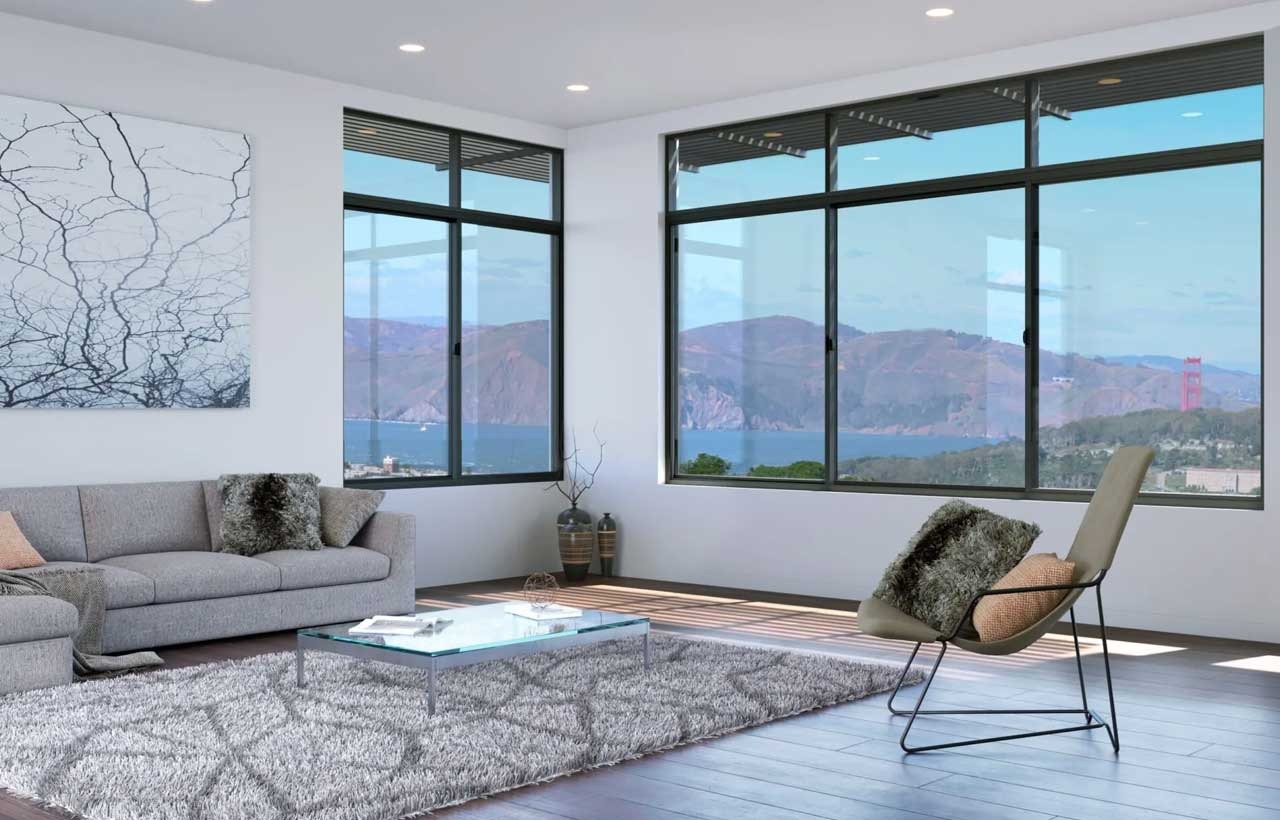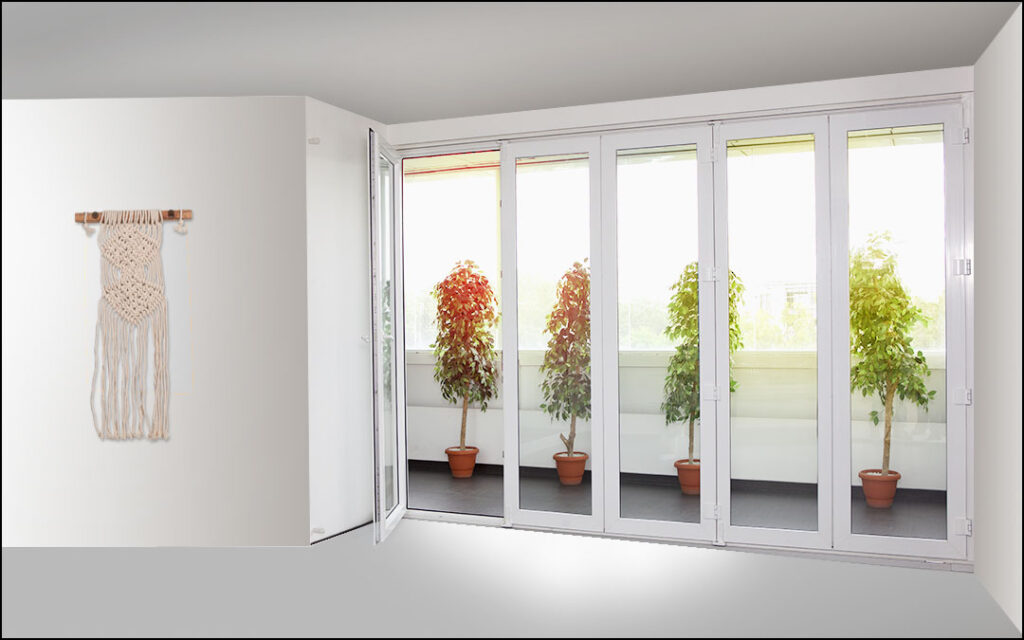Building Trust Since 2005
Aluminium doors and Windows
We are Brawny Windows, dedicated to providing top-tier fenestration services that transform buildings into cherished homes, elevating lifestyles with enhanced beauty. Our reputation as a dependable fenestration authority rests on three core principles: Our Expertise, our Experience, and our unwavering commitment to Quality!
Benefits of Aluminium Doors and Windows
Durability and Strength
- Aluminium is a strong and durable material, capable of withstanding harsh weather conditions without warping, cracking, or rusting.
- It provides a robust framework for large windows and doors, ensuring longevity and security.
Energy Efficiency
- Modern aluminium frames come with thermal breaks that enhance energy efficiency by reducing heat transfer.
- They can be fitted with double or triple glazing to improve insulation and reduce energy bills.


Aesthetic Appeal
- Aluminium doors and windows offer a sleek and modern look, with narrow sightlines that maximise natural light.
- They are available in a wide range of colours and finishes, including anodized, powder-coated, and wood-effect.
Low Maintenance
- Aluminium requires minimal maintenance compared to other materials like wood.
- It does not need frequent painting or staining and can be easily cleaned with mild detergent and water.
Recyclability
- Aluminium is a sustainable material that can be recycled indefinitely without losing its properties.
- Choosing aluminium products contributes to environmental conservation efforts.

Maintenance Tips
Regular Cleaning
- Clean frames and glass regularly with a mild detergent and water.
- Avoid abrasive cleaners or tools that could damage the surface.
Inspect and Lubricate Moving Parts
- Check hinges, locks, and rollers for wear and tear.
- Lubricate moving parts with a silicone-based lubricant to ensure smooth operation.
Check Seals and Weatherstripping
- Inspect seals and weatherstripping for signs of damage or wear.
- Replace any damaged parts to maintain energy efficiency and prevent drafts.
Avoid Corrosive Environments
- If you live in a coastal area, rinse the aluminium frames with fresh water regularly to prevent salt build-up.
- Consider special coatings for added protection against corrosion.
Upvc Doors and windows
uPVC (unplasticized polyvinyl chloride) doors and windows have gained popularity in both residential and commercial construction due to their durability, energy efficiency, and cost-effectiveness.
Benefits of uPVC Doors and Windows
Energy Efficiency
- uPVC doors and windows provide excellent thermal insulation, helping to keep your home warm in winter and cool in summer.
- They often come with double or triple glazing options, reducing heat loss and lowering energy bills.
Durability and Longevity
- uPVC is a highly durable material that resists rotting, corrosion, and warping, making it ideal for all weather conditions.
- These doors and windows have a long lifespan and maintain their appearance over time.


Low Maintenance
- Unlike wood, uPVC requires minimal maintenance and does not need regular painting or varnishing.
- Cleaning is simple with just soap and water, making upkeep easy and cost-effective.
Sound Insulation
- uPVC frames, combined with appropriate glazing, provide excellent sound insulation, reducing external noise for a quieter indoor environment.
- This is particularly beneficial for homes in noisy urban areas or near busy roads.
Security
- uPVC doors and windows are robust and often come with multi-point locking systems, enhancing the security of your home.
- The material itself is tough to break or damage, providing an added layer of protection.
Aesthetic Flexibility
- Available in a variety of colors, finishes, and styles, uPVC doors and windows can complement any architectural design.
- Wood-effect finishes offer the appearance of traditional timber without the associated maintenance.

Maintenance Tips
Regular Cleaning
- Clean uPVC frames and glass with a mild detergent and water to prevent dirt build-up.
- Avoid abrasive cleaners that could scratch the surface.
Check Seals and Gaskets
- Inspect the seals and gaskets regularly to ensure they are intact and not allowing drafts.
- Replace any damaged seals to maintain energy efficiency.
Lubricate Moving Parts
- Keep hinges, locks, and other moving parts well-lubricated to ensure smooth operation.
- Use a silicone-based lubricant for best results.
Avoid Excessive Force
- Do not force windows or doors open or closed, as this can damage the frames and mechanisms.
- If a window or door is sticking, inspect it for obstructions or misalignment.
Facades
Facades are the most prominent and defining feature of any building, serving as both the exterior shell and the architectural expression of the structure. Over the years, the design and functionality of facades have evolved significantly, incorporating advanced materials and technologies to improve aesthetics, energy efficiency, and sustainability
The Role of Facades in Architecture
Aesthetic Appeal
- Facades are a key element in defining the visual identity of a building.
- They contribute to the overall architectural style and can make a statement about the building's purpose and character.
Environmental Protection
- Facades protect the building from environmental elements such as rain, wind, sunlight, and temperature variations.
- They act as a barrier against external weather conditions, ensuring the comfort and safety of occupants.


Energy Efficiency
- Modern facades are designed to enhance energy efficiency by incorporating insulation and reducing thermal bridging.
- They can include elements like double-glazed windows and shading devices to minimize energy consumption.
Acoustic Insulation
- High-performance facades can provide excellent sound insulation, reducing noise pollution from the external environment.
- This is especially important in urban areas with high levels of ambient noise.
Ventilation and Natural Light
- Well-designed facades facilitate natural ventilation and maximize the use of natural light, creating healthier indoor environments.
- This reduces the need for artificial lighting and mechanical ventilation, further improving energy efficiency.

Key Considerations in Facade Design
Climate and Environment
- The design of the facade should take into account the local climate and environmental conditions.
- Consider factors such as solar orientation, wind patterns, and precipitation.
Material Selection
- Choose materials that are appropriate for the building’s location and intended use.
- Consider durability, maintenance requirements, and aesthetic qualities.
Sustainability
- Incorporate sustainable practices by selecting eco-friendly materials and incorporating energy-efficient technologies.
- Design facades that reduce energy consumption and improve indoor environmental quality.
Structural Integrity
- Ensure that the facade system is compatible with the building’s structural framework.
- Conduct thorough engineering assessments to guarantee safety and performance.
Regulatory Compliance
- Adhere to local building codes and regulations regarding facade design and construction.
- Ensure compliance with safety standards, especially in terms of fire resistance and structural stability.
Maintenance
- Design facades with ease of maintenance in mind to ensure longevity and performance.
- Consider access for cleaning, repairs, and replacement of facade components.


